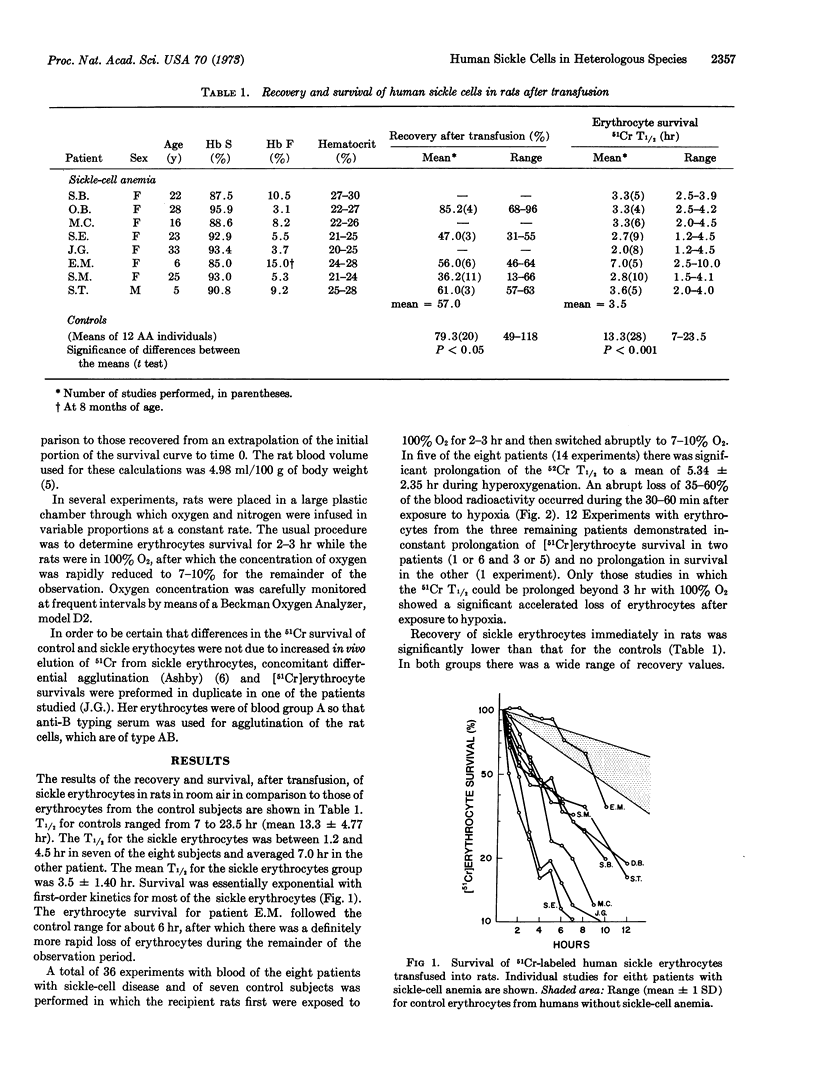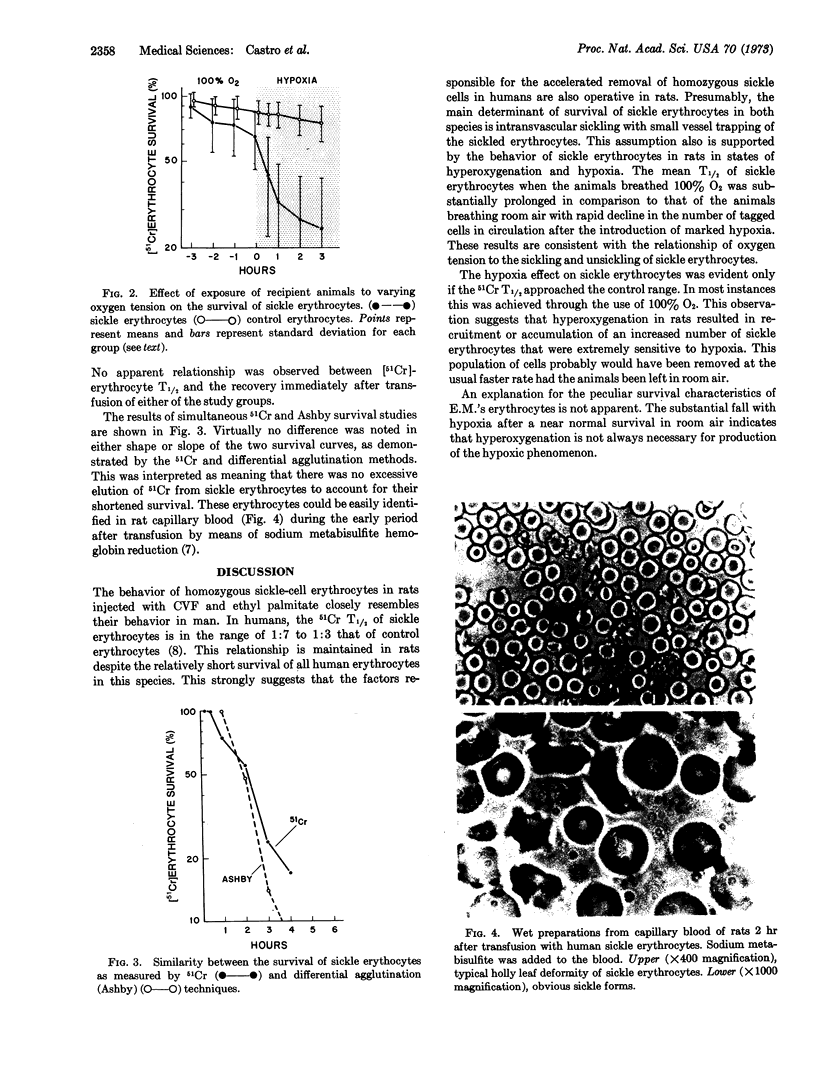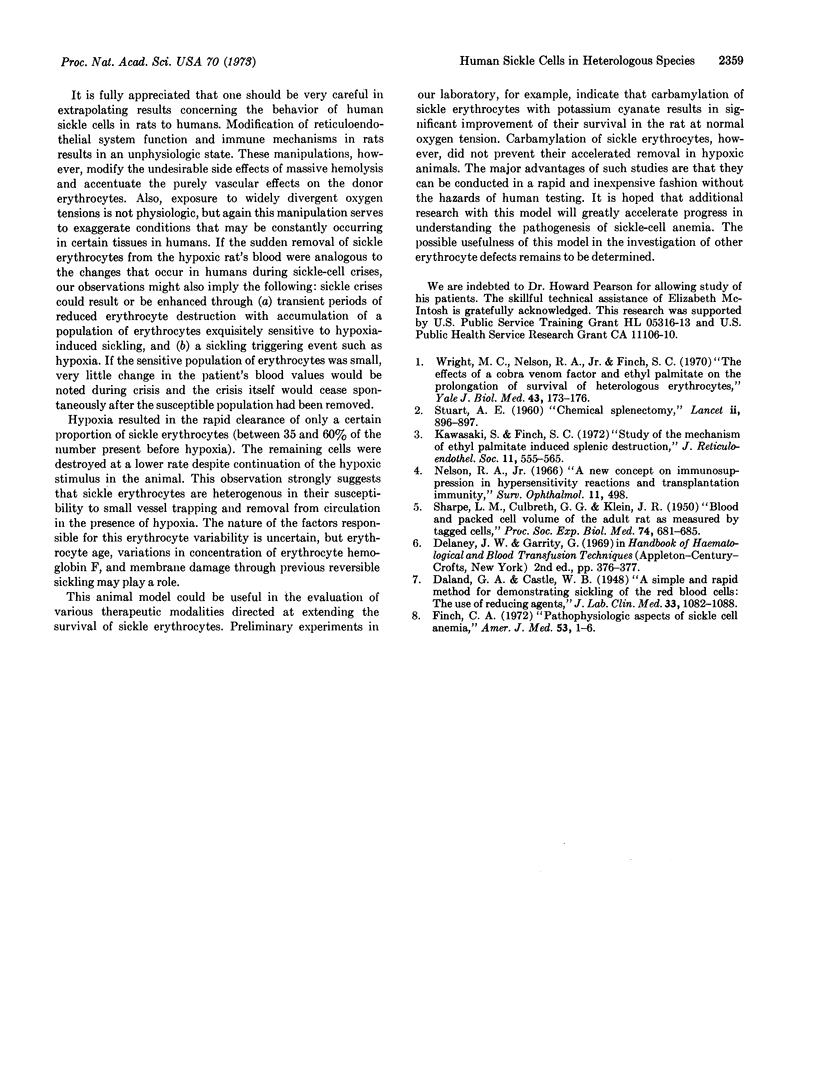Abstract
Survival characteristics, after transfusion, of erythrocytes from patients with homozygous sickle-cell disease were studied in rats. The study was made possible by previous injection of the animals with ethyl plamitate, which depressed reticuloendothelial system function, and with a factor in cobra venom that inactivated complement. This treatment prevented the rapid phagocytosis and intravascular hemolysis of donor erythrocytes that usually follow a heterologous transfusion. Both immediate after transfusion recovery and survival of 51Cr-labeled sickle erythrocytes were decreased in comparison to the values obtained for control erythrocytes from individuals without sickle-cell anemia. Survival of sickle erythrocytes was improved during exposure of the animals to 100% O2. Hypoxia (7-10% O2) resulted in the abrupt removal of 35-60% of sickle erythrocytes from the rats' circulation. Variations in oxygen tension did not affect survival of control erythrocytes. The usefulness of this convenient animal model for the study of sickle-cell anemia is suggested by the similarities between our results and the behavior of sickle erythrocytes in humans. The system may also be suitable for studying a wide variety of other human erythrocyte disorders.
Keywords: sickle-cell anemia, [51Cr]erythrocyte survival, heterologous transfusions, hypoxia, hemoglobin S
Full text
PDF



Images in this article
Selected References
These references are in PubMed. This may not be the complete list of references from this article.
- Finch C. A. Pathophysiologic aspects of sickle cell anemia. Am J Med. 1972 Jul;53(1):1–6. doi: 10.1016/0002-9343(72)90110-6. [DOI] [PubMed] [Google Scholar]
- Kawasaki S., Finch S. C. Study of the mechanism of ethyl palmitate-induced splenic destruction. J Reticuloendothel Soc. 1972 Jun;11(6):555–565. [PubMed] [Google Scholar]
- Nelson R. A., Jr A new concept of immunosuppression in hypersensitivity reactions and in transplantation immunity. Surv Ophthalmol. 1966 Aug;11(4):498–505. [PubMed] [Google Scholar]
- SHARPE L. M., CULBRETH G. G., KLEIN J. R. Blood and packed cell volume of the adult rat as measured by tagged cells. Proc Soc Exp Biol Med. 1950 Aug;74(4):681–685. doi: 10.3181/00379727-74-18014. [DOI] [PubMed] [Google Scholar]
- Wright M. C., Nelson R. A., Jr, Finch S. C. The effects of a cobra venom factor and ethyl palmitate on the prolongation of survival of heterologous erythrocytes. Yale J Biol Med. 1970 Dec;43(3):173–176. [PMC free article] [PubMed] [Google Scholar]



